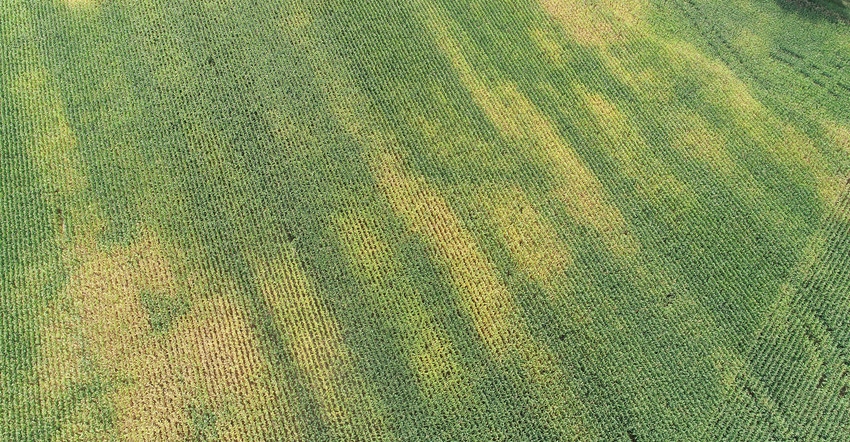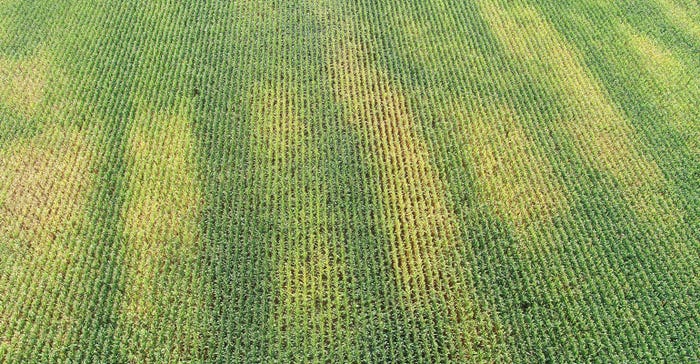
This cornfield looked good all summer based on scouting at ground level. There was a healthy stand, and repeated visits throughout the season indicated good pollination and grain fill. A few places were impacted by too much rain early, but overall it appeared to be good corn.
The fact is that it was good corn, notes Nathan Bush, an agronomist with Greene Crop Consulting, Franklin, Ind. Yet it held a mystery that couldn’t be detected on the ground. As the crop neared black layer, the scout noted that some areas turned brown more quickly than others, but he knew there were two hybrids in the field, planted side by side. He figured a difference in maturity explained what he saw.
Aerial view
Bush flew a drone over the field twice — once shortly after pollination, and again just before black layer. Both times, he picked up irregular streaks of lighter vegetation across the field.
“The difference in color was more pronounced in late season, but it was there earlier, too,” Bush says. Note the irregular pattern in the image showing the field.
To get a better look, Bush brought the drone down lower so he could pick out individual rows. He was using a DJI Phantom 4 Pro. Cameras on this model typically don’t zoom in very far, but you get a closer look by flying lower.
“The close-up image shows some rows are in the green pattern at times but in the brown pattern at other times,” Bush says. “That proved this was more than hybrid difference. I used my tablet to walk to a spot showing lighter color. I walked a few rows over, and stalks were green. But it was the same hybrid!”

CLOSER LOOK: The pilot dropped altitude to get a closer view. Rows slant on a slight angle one direction, with the streak angling slightly in the other direction. Single rows run in and out of green and brown colors.

What caused streaks? Was it soil type? Maybe that played a role, but there was an angle to the pattern. Maybe hybrid difference was involved, but Bush had ruled that out as the sole cause. Could it be soil compaction? If so, it wasn’t from the planting pass — the streaks ran at a different angle than rows.
Could it be soil compaction from a tillage trip? Perhaps it was from combining soybeans at an angle in 2018?
After visiting with the operator, Bush hit on a more likely explanation. The operator applied anhydrous ammonia preplant on a slight angle matching up with streaks. He recalled issues with his rate controller. Some rows received more nitrogen than others.
“That would explain why plants of the same hybrid near black layer were drying up, yet a few rows over, plants of the same hybrid were still green,” he concludes.
About the Author(s)
You May Also Like




